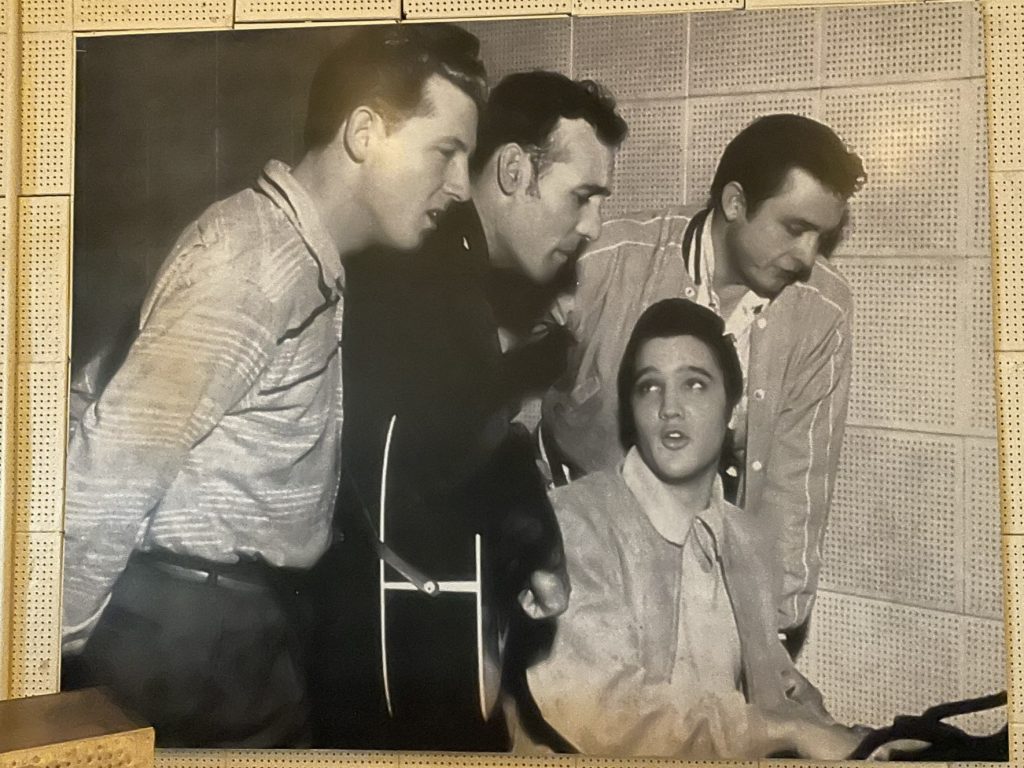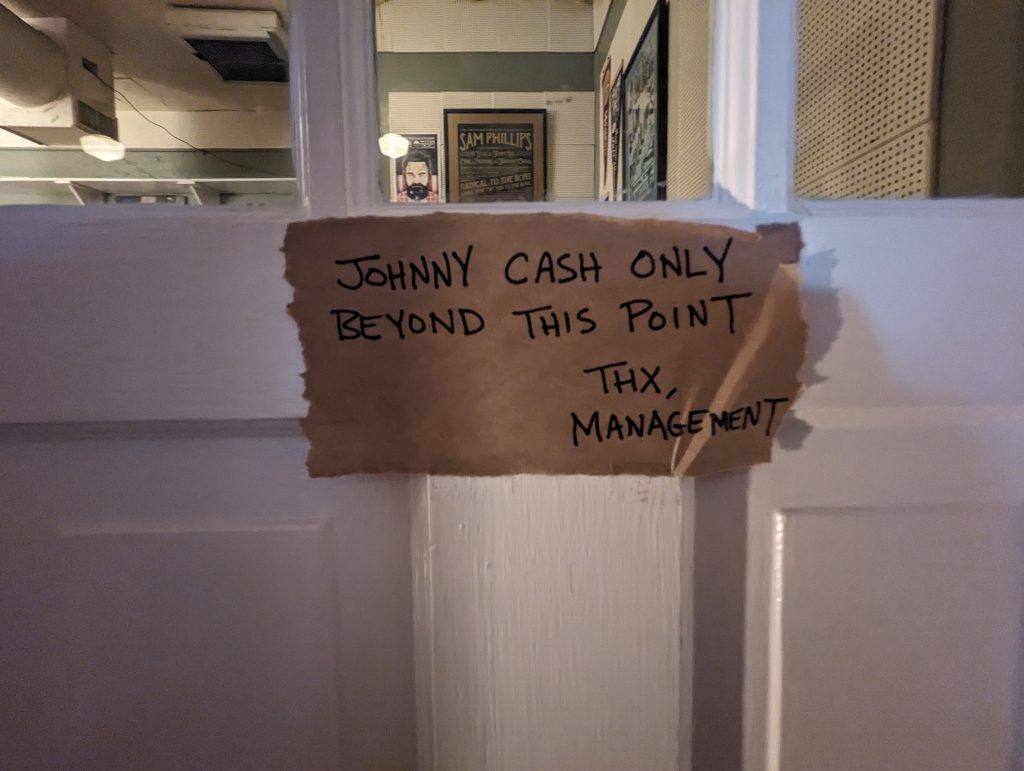Sun Studio is a recording studio in Memphis, Tennessee, founded by Sam Phillips. It originally opened in 1950 as Memphis Recording Service.
In 1951 Phillips recorded what is considered by many to be the first rock and roll song, “Rocket 88.” The artist was Jackie Brenston and his Delta Cats – which was actually Ike Turner and his Kings of Rhythm. Hence, they are known in some circles as “The Birthplace of Rock ‘n Roll.”
In 1952, Phillips opened Sun Records in the same space as the studio, recording B.B. King early on and eventually going on to record Johnny Cash, Carl Perkins, Roy Orbison, Jerry Lee Lewis, and so many more in the 1950s.


The next year a totally unknown 18-year-old Elvis Presley sauntered in (I assume he sauntered) to pay for some studio time. Employee Marion Keisker liked his sound, and made a note to tell Phillips about him, but it went nowhere. The next year the story repeats, with Presley recording a couple more songs for personal use, Marion saying “how about this Elvis guy”, and nothing coming of it.
However, Phillips was on the lookout for a musician who sounded black without the pesky problem (in the segregated South of the time) of actually being black. Marion pressed him to give that Elvis kid a shot. He did, but it didn’t go well. Elvis was very nervous and couldn’t bring the song to life. However, Phillips liked Elvis’ sound, and he brought in two local musicians to work with him.
On July 5, 1954, a recording session took place, but nothing was working. Everyone but Elvis was about ready to call it a night. Desperate to keep things going, Elvis grabbed his guitar and began playing a version of Arthur Crudup’s 1946 “That’s All Right.” Suddenly, the magic was there. The other musicians jumped in and Phillips was immediately enthused.
Three days later a popular Memphis DJ, Dewey Phillips (no relation to Sam) played the song on his show, and it was an immediate hit.
So many called in that the song was played again and again and again throughout the show. Dewey even called Elvis for an on-air interview, asking him what high school he attended so listeners could find out if he was black or not. (I guess that’s how you knew if you liked what you were listening to back then?)


Elvis’ career was launched, but Sun Records was not big enough to take him national. In two years or so, Phillips sold the contract for $35,000 to RCA, which was, at the time, an unheard-of amount of money for a relatively unknown artist. Phillips needed the money to settle debts and further other artists’ careers. He was sorry to see Elvis go, but knew it was the right decision. And he had some other artists in the bullpen, like a young singer named Johnny Cash.
In the 1960s Phillips’ interest moved to radio; at the same time, the studio’s reputation as a place of innovation was in decline. In 1969, Phillips sold the label and all recording and label-related activity ceased at this location for almost 20 years.
In 1987 Gary Hardy opened the current Sun Studio attracting such artists as Bonnie Raitt, Def Leppard, and U2, all eager to play at the historic site. It’s still an active studio. It’s just $200 an hour to see if you’ve got what it takes.
There isn’t especially much to see on the tour. There are display cases with memorabilia, but its mostly the stories of the tour guide that make it interesting.
Then you move to the studio where the magic happened all those years ago.
There are more stories and a chance to sing into the actual microphone that Elvis used!






